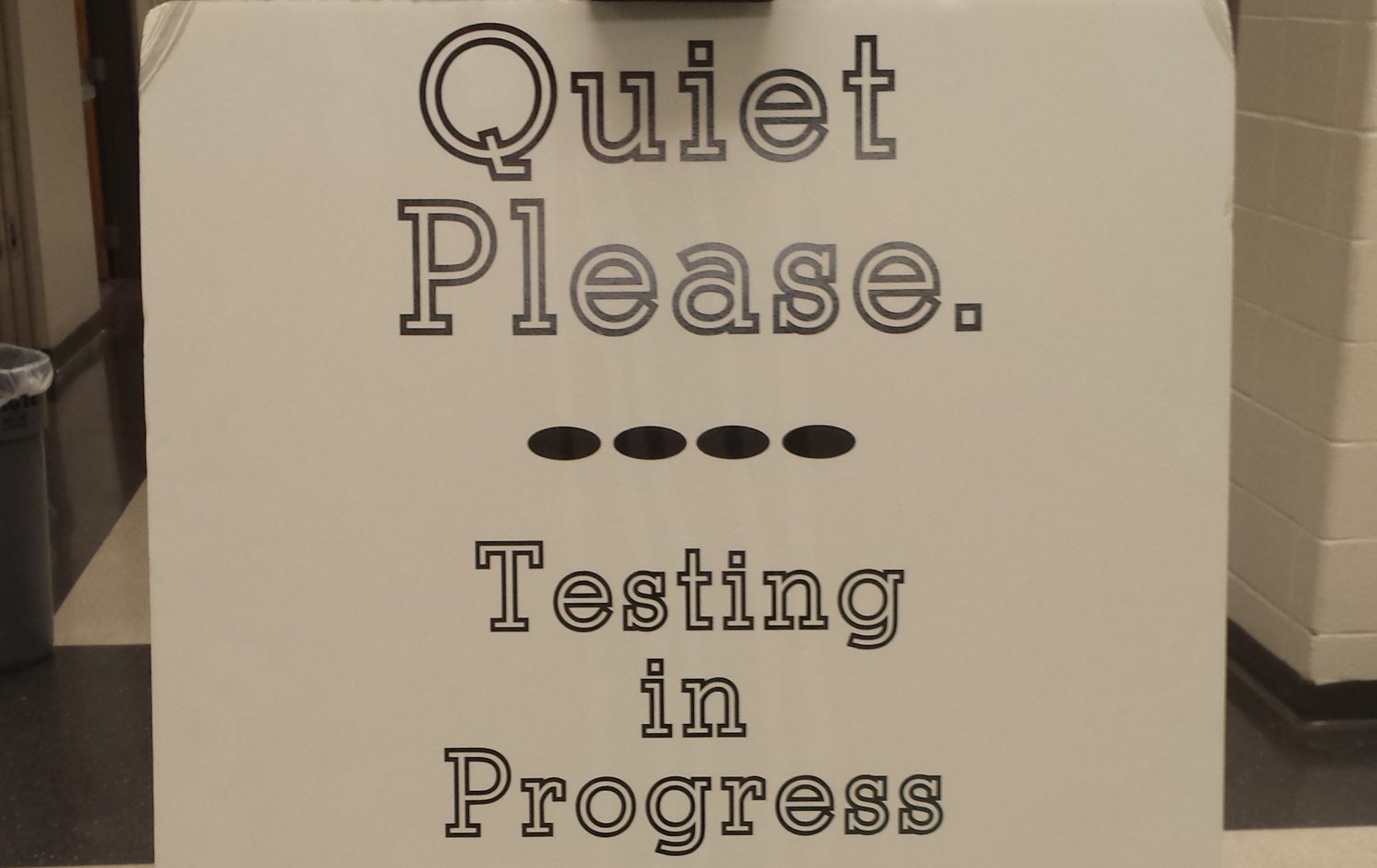
By BLAKE FOWLER
Even though the Student Learning Objective exam, or SLO for short, is only around 30 questions, many students find it to be a trifle of an assessment and an irritating use of an entire class period, which is the allotted time given to complete the SLO. A popular opinion among students and teachers alike is that the SLO assessment is merely a waste of time.
“Personally, I have Christmas-treed every single SLO [pretest] that I’ve taken so far this year,” senior Robert Brown said last fall. Many students tend to give very little effort, usually in the form of not answering confusing questions, giving up when time runs short, or in the case of Brown, the “Christmas-tree.”
Mario Herrera, a speech and debate teacher at Grady, is strongly opposed to students giving up or not attempting to complete the SLO.
“That’s not cool,” he said, “I have my issues with standardized testing like everyone else, but I think they can be used as tools to help teachers in classrooms make sure that what’s being taught in the class can help students learn more effectively, more quickly, more deeply.”
Sara Looman, an Advanced Placement World Geography teacher at Grady, is very disappointed in students who give up simply because it isn’t for a grade.
“It’s disappointing,” Looman said last fall when the SLO pretests were administered. “I realize they are not fun, but if you don’t try on the first one, when you take it again in April, you don’t really have an accurate gauge of what they have actually learned over the course of the year.”
Contrary to the belief of many students, the SLO is not entirely about their final grade or tracking their academic progress; teachers are also evaluated based on this assessment.
According to the Georgia department of Education’s SLO Operations Manual, “The primary purpose of SLOs is to improve student achievement at the classroom level. An equally important purpose of SLOs is to provide evidence of each teacher’s instructional impact on student learning.”
The district’s definition of the SLO test, however, is not widely known among the younger students at Grady.
“I think it’s there to get kinda like a baseline for how much you’re supposed to learn throughout the year,” sophomore Ely Peteet said.
The SLO is a statewide test, although the tests vary in each school district. Each district creates its own SLO assessments and supplies teachers with them. The teachers first give students a preassessment which provides the teachers with an idea of what needs to be taught to the students in that semester and then, as soon as the semester begins to draw to a close, the teachers hand out the postassessment. Although the teacher administers, grades and records the students’ scores in Infinite Campus, an administrator makes the final determination as to whether or not the teachers have met their goal with the SLO and whether or not they covered all of the state’s required standards. If teachers receive low evaluations two years in a row, they can lose their teaching certification.
“The thing to keep in mind is that the SLOs are a component of the teacher’s evaluation under the state of Georgia’s Teacher Keys Evaluation System,” said Carrie MacBrien, the leader of the Communications and Journalism Pathway at Grady. “It is just one component. There are several other components that weigh into it. The part that has the greatest weight is what’s called the TAPS portion, which is the Teacher’s Assessment on the Performance Standards.”
While things like TAPS do have a greater amount of weight in a teacher’s evaluation than the outcome of the SLO assessments, SLO assessments are still approximately 20 percent of the final evaluation. While this may seem somewhat miniscule to some, comparatively, it is still a part of the evaluation. So when students don’t try on the SLO and barely know what the assessment is for, teachers become worried.
“It’s a unique test,” Herrera said. “We’re told it’s high-stakes, but students know that it’s really not high-stakes for them. Thirty questions is going to determine whether or not a teacher is teaching? It runs contrary to everything we are taught to teach you all.”
Another factor of stress from the SLOs are scheduling complications. When every core class and even many elective classes are required by the district to take the assessment, there are days when students do nothing but test in every class period.
“You get to waste time in class, which is a disadvantage sometimes,” sophomore Orly Mansbach said. “Your teachers complain about them all the time, they’re no fun to take, and usually you take a lot of them on one day, which is just frustrating.”
Even teachers are frustrated when their schedules are full of SLO assessments.
“I think we’re at a tipping point,” Looman said. “In terms of testing and assessment, there comes a point where we have to look, I think, very carefully at the calendar and realize perhaps we are testing more than we are teaching.”
A large quantity of students are quite opposed to the SLOs as are some number of teachers. The difference is that in teachers, they are not only worried about students, many of whom are uneducated as far as what the SLO is actually used for, but they are also worried about their own well-being and career.
“I honestly think that on so many levels, the best of intentions are there, but this isn’t it,” Herrera said, “Students aren’t numbers, students aren’t bubbles on paper.”








anonymous • Apr 30, 2015 at 6:19 am
link for previous comment:
http://www.gadoe.org/School-Improvement/Teacher-and-Leader-Effectiveness/Documents/FY15%20TKES%20and%20LKES%20Documents/SLO%20Resources/2014-2015%20SLOs%20and%20FAQs.pdf
anonymous • Apr 30, 2015 at 6:11 am
This comes directly from the Ga DOE website. The SLO exam can count for significantly more on teacher evaluation. It is disingenuous to downplay this to 20% and I am dismayed that an administrator would be holding this false metric up with such flimsy arguments by diminishing the potential impact.
“Student growth will count as 50% of the TEM.
An SLO attainment rubric will be used to
determine a teacher effectiveness rating which is
based on the percentage of students within each
teacher’s course that met or exceeded their SLO
learning targets.”